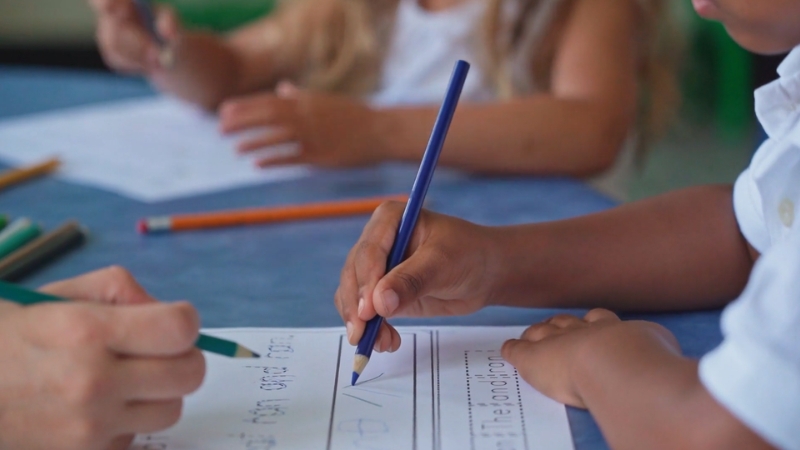Students from higher SES families often have access to private tutoring, extracurricular activities, and well-resourced schools, which can enhance their learning. In contrast, lower SES students may attend overcrowded schools with limited resources, which can hinder their academic progress.
Parents with higher education levels, typically associated with higher SES, can provide a more stimulating home environment and better academic support, such as help with homework.
This support is often less available for lower SES students, affecting their performance.
Data shows that in the United States, low SES students have a dropout rate of 7.2%, compared to 3.6% for mid SES and 3.9% for high SES, and only 14% graduate college compared to 60% for high SES.
Internationally, PISA 2015 data indicates significant score gaps in science literacy between SES quartiles, with OECD averages showing a 88-point difference between the bottom and top quarters.
Impact on Educational Resources and School Quality
Students from higher SES backgrounds benefit from enhanced educational resources, which can significantly boost their learning outcomes. Research from Reality Changers indicates that higher SES students often attend better-funded schools, have access to private tutoring, and can participate in extracurricular activities.
Conversely, lower SES students may face overcrowded classrooms and limited access to technology, as noted in Science of Learning, which highlights lower levels of physical and educational resourcing in schools with lower SES student populations.
An unexpected finding is that schools can sometimes exacerbate these inequalities by offering systematically weaker content to lower-income students, as mentioned in the same source, rather than ameliorating educational disparities.
Home Environment and Parental Support
The home environment is another critical factor influenced by SES. Parents with higher education levels, often associated with higher SES, can provide a more stimulating environment that promotes cognitive development. PMC emphasizes that books in the home, a common indicator of SES, are one of the most influential factors in student achievement.
Higher SES parents are also more likely to offer psychological support, encouraging skills necessary for school success, as noted in Frontiers.
In contrast, lower SES families may experience higher stress levels due to financial instability, which can negatively impact students’ mental health and academic performance, as discussed in Pathways to Education.
Psychological and Social Factors
View this post on Instagram
Financial instability tied to low SES creates significant psychological stress, impacting students’ mental health and academic performance. Pathways to Education notes that anxiety from financial worries can hinder concentration and motivation, critical for learning.
This stress often stems from unpredictable income or housing insecurity, affecting not just students but their families, creating a tense home environment.
Socially, low SES students may face exclusion or stigma, lowering self-esteem and peer support, as discussed in Vadivel – 2023.
Education inequalities at the school starting gate add that prolonged poverty, common in low SES households, disrupts early education, with lasting effects on outcomes due to limited resources and heightened stress from a young age.
Long-term Educational Outcomes and Statistics
The long-term effects of SES on education are stark, particularly in terms of dropout rates and college graduation. In the United States, The Socioeconomic Achievement Gap in the US Public Schools reports that low SES students have a high school dropout rate of 7.2%, compared to 3.6% for mid SES and 3.9% for high SES, with only 14% graduating college compared to 60% for high SES students.
Internationally, data from the Programme for International Student Assessment (PISA) 2015 provides insight into SES-related performance gaps. Program for International Student Assessment (PISA): 2015 Results shows significant disparities in science literacy scores by ESCS quarters. For example:
PISA 2015 Science Literacy Scores by ESCS Quarters
Country
Bottom Quarter
Second Quarter
Third Quarter
Top Quarter
All Students
OECD Average
452
481
505
540
493
United States
457
478
508
546
496
Australia
468
497
525
559
510
Canada
492
518
542
563
528
Singapore
497
543
574
609
556
This table illustrates a clear trend: students in the top ESCS quarter consistently outperform those in the bottom quarter, with an OECD average difference of 88 points, nearly one standard deviation on the PISA scale, indicating a substantial impact of SES on educational achievement.
Additional Insights and Global Perspectives

Further analysis from Wiley Online Library suggests that SES affects not only academic performance but also access to opportunities like preschool, which can set the foundation for future educational success. The study notes that students from higher SES backgrounds receive more support from parents, contributing to better grades.
Moreover, Punjab Colleges discusses how SES influences child development, with disadvantaged students facing higher probabilities of developmental alterations due to housing conditions and parental occupation.
The study highlights that children from higher SES backgrounds benefit from enriched preschool experiences—such as structured learning environments and educational materials—often unavailable to lower SES peers due to cost or availability.
Additionally, these students receive more consistent parental support, including help with homework and encouragement, which correlates with improved grades and academic resilience.
Authors @SannevdKleij, @ap_burgess, @ricketts_lara, & @LaShaps1 look at how #socioeconomic status affects, #vocabulary & #reading during the transition from primary to secondary school in #ChildDevelopment (2022).
Learn more: https://t.co/C0xlWotgMM pic.twitter.com/i5Xv96Howh— Society for Research in Child Development (@SRCDtweets) January 9, 2023
Complementing this Punjab Colleges explores how SES influences broader child development, particularly in disadvantaged contexts. Low SES students face higher risks of developmental challenges due to substandard housing conditions—like overcrowding or lack of quiet study spaces—and parental occupations that demand long hours or physical labor, leaving little time for educational engagement.
Globally, these patterns are evident; for example, in developing countries, low SES children may also contend with malnutrition or inadequate healthcare, further compounding developmental and educational disparities.
These insights underscore how SES creates a multifaceted web of influence, affecting not just school performance but the holistic growth of students worldwide.
Conclusion

The evidence unequivocally establishes socioeconomic status (SES) as a critical determinant of educational opportunities, creating a stark divide between students from high and low SES backgrounds.
High SES students benefit from tangible advantages: private tutoring, extracurricular activities, and well-funded schools with abundant resources like advanced technology and smaller class sizes, all of which propel their academic success.
In contrast, low SES students often navigate overcrowded, underfunded schools with outdated materials and limited access to enrichment programs, stifling their learning potential.
Data from the United States underscores this gap—low SES students face a 7.2% high school dropout rate compared to 3.6% for mid SES and 3.9% for high SES, with only 14% earning a college degree versus 60% of their high SES peers.
Globally, PISA 2015 data reveals an 88-point science literacy score gap between the top and bottom SES quartiles across OECD countries, a disparity equivalent to nearly one year of schooling.

